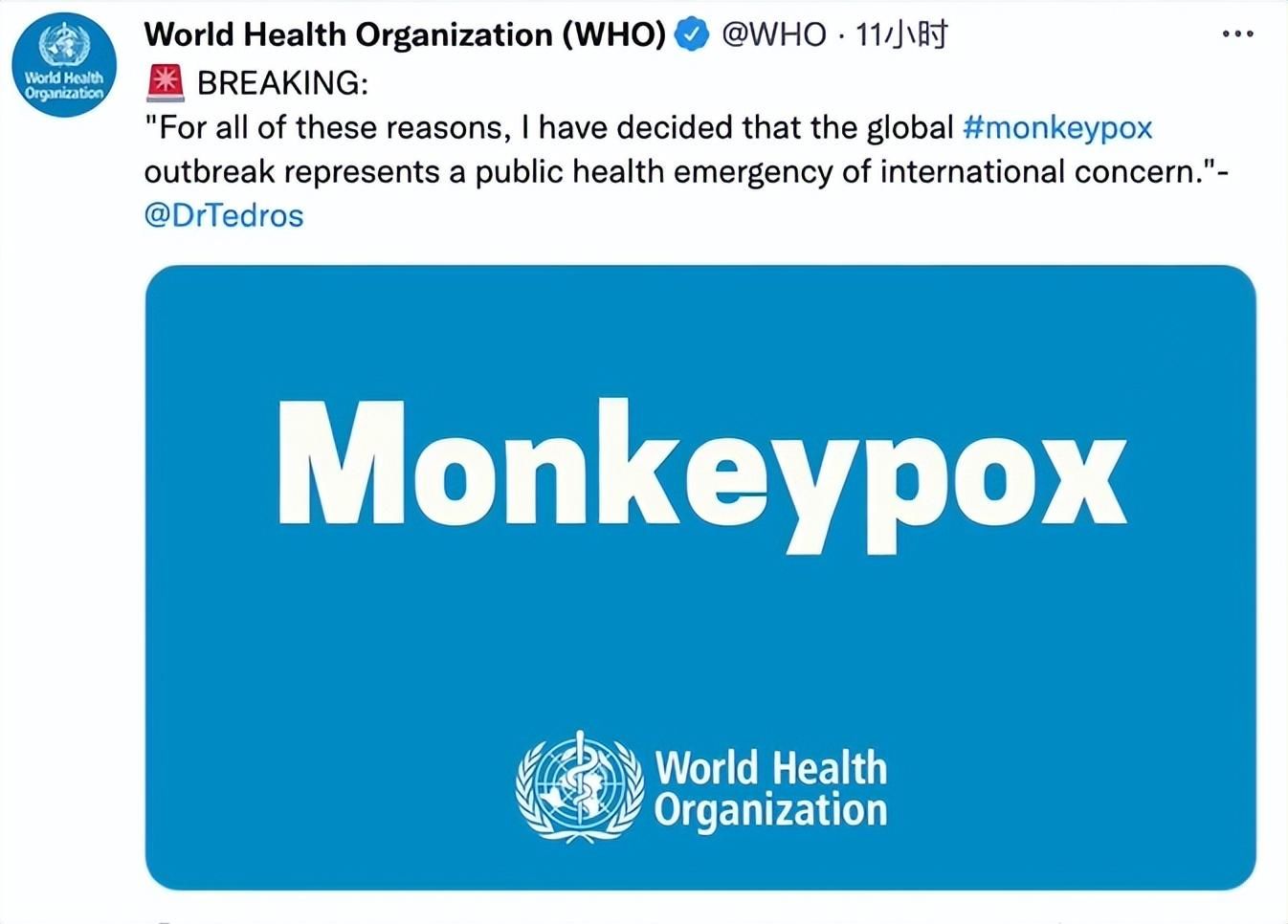Author: Rong Media reporter Huang Jing
On July 23, the Director-General of the World Health Organization (WHO) Tedros Adhanom Ghebreyesus announced that at present The monkeypox outbreak in 75 countries and territories constitutes a “public health emergency of international concern”. This is another highest-level alert issued by the WHO in response to a global public health emergency after the new crown epidemic.

Over 16,000 cases and 5 deaths
Monkeypox epidemic Since it was first reported by the United Kingdom in early May this year, and then European and American countries have reported cases one after another, the epidemic has spread rapidly in many parts of the world. By the end of June, 47 countries and regions had reported cases, with about 3,040 cases. The committee finally reached a consensus that the monkeypox outbreak did not constitute a “public health emergency of international concern” for the time being. On July 21, the WHO Emergency Committee met again to discuss the monkeypox outbreak. At this time, 75 countries and territories have reported more than 16,000 cases to WHO, including 5 deaths.
It is reported that the monkeypox virus has rapidly spread to countries where no cases have been reported before, which poses a risk to human health and may form an international It also has potential interference with international traffic. The risk of monkeypox is increased, and the scientific principles, evidence and other relevant information about monkeypox are currently insufficient and many unknowns are still unknown. Therefore, the WHO has decided to increase the risk level.
According to WHO data, there are certain geographical differences in the incidence of monkeypox. The largest number of cases are reported in the European and American countries classified by WHO, and most of the cases are males. Men who have sex with men, but also a small number of children with no known epidemiological link to confirmed cases; and West and Central Africa, where pre-existing cases are high, also saw a significant increase, with women and children being the predominant population.
On July 25, Wu Zunyou, chief epidemiologist at the Chinese Center for Disease Control and Prevention, said that monkeypox was introduced into mainland China, Hong Kong, and Macau. ,Just a matter of time. Due to the limitation of the mode of transmission, the speed of its spread and the range of people affected are far from that of the new crown epidemic. The monkeypox outbreak will not cause a large-scale epidemic in my country.
Sexually transmitted mainly through close contact
As a viral zoonotic disease, the pathogen of monkeypox Monkeypox virus is mainly endemic in West and Central Africa. In 1970, the Congo (Kinshasa) discovered the first case of human infection with monkeypox, and since then, most of the cases have been concentrated in the Congo (Kinshasa), Congo (Brazzaville), Central African Republic, Nigeria, Cameroon and other African countries.
Recently, experts have refuted on the Internet that dead birds in the community can be infected with monkeypox. Monkeypox is spread through MSM. More than 99% of monkeypox in the UK occurs in men, the majority of whom are gay, bisexual and other men who have sex with men. Scientists warn that anyone who comes into contact with monkeypox virus, clothing or sheets, is at great risk, regardless of sexual orientation.
The initial symptoms of monkeypox infection in humans include fever, headache, muscle aches, back pain, and swollen lymph nodes, which can later develop into the face and body Widespread rash. In this outbreak, some cases have had a different onset, with rash lesions confined to the genital, perineal, perianal, or perioral areas, usually not spreading further, and later appearing with lesions. Associated lymphadenopathy, fever, pain and other symptoms.
WHO has provided a series of specific epidemic prevention and control recommendations for four categories of countries and regions, including recommending implementing coordinated response measures to stop the spread of the epidemic, allowing Affected communities are engaged in prevention and control, strengthening surveillance and public health measures, strengthening clinical management and infection prevention and control in hospitals and clinics, and accelerating research into the use of vaccines, treatments, and other tools.